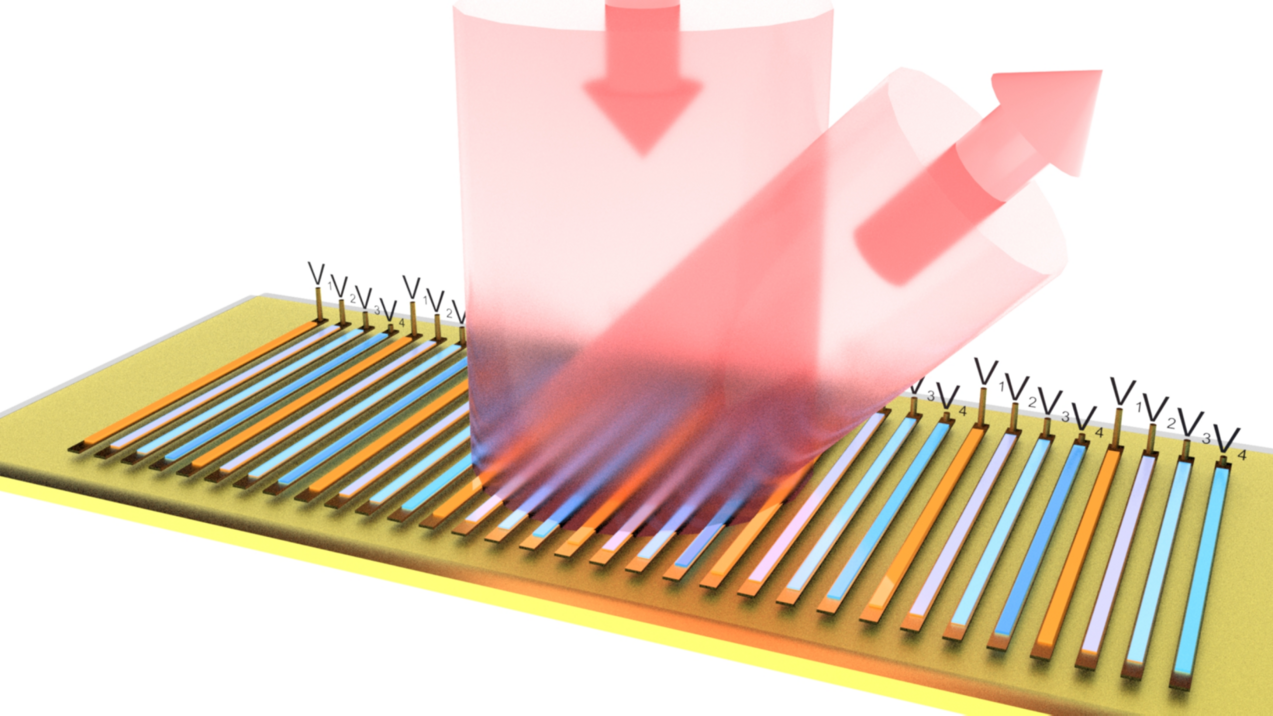Active light-matter interaction


The miniaturization of classical optical elements is of great importance for novel displays, ultra-compact cameras, sensors, AR/VR components, and much more. The field of so-called "metasurfaces" has opened up new pathways and enabled innovative solutions. A key next step is the implementation of active metasurfaces, which allow the modulation of electromagnetic fields in both the near and far field at the push of a button. An efficient realization of this vision would have far-reaching implications for various fields, including physics, electrical engineering, and medicine. In particular, it would create new possibilities for signal processing, detection, and optical computations.
Furthermore, the active control of the near field of one or more quantum emitters is an important research direction that could facilitate signal transmission between different platforms across space.
Our research group is exploring various approaches to co-integrate electronics and optics on phase-change-material-based platforms. The goal is to implement a computationally driven reconfigurable light-matter interaction.
NA Güsken, ML Brongersma, Electryfiying the Field of Metasurface Optics, Photonic Insights, Vol 3, Issue 4, C08 (November 2024). https://doi.org/10.3788/PI.2024.C08
Wang, Y., Landreman, P., Schoen, D. et al. Electrical tuning of phase-change antennas and metasurfaces. Nat. Nanotechnol. 16, 667–672 (2021). https://doi.org/10.1038/s41565-021-00882-8
Son Tung Ha et al. Optoelectronic metadevices. Science 386, eadm7442 (2024). DOI:10.1126/science.adm7442
A. Kuznetsov et al, Roadmap for Optical Metasurfaces, ACS Photonics 2024 11 (3), 816-865, DOI: 10.1021/acsphotonics.3c00457
Flöry, N., Ma, P., Salamin, Y. et al. Waveguide-integrated van der Waals heterostructure photodetector at telecom wavelengths with high speed and high responsivity. Nat. Nanotechnol. 15, 118–124 (2020). https://doi.org/10.1038/s41565-019-0602-z
